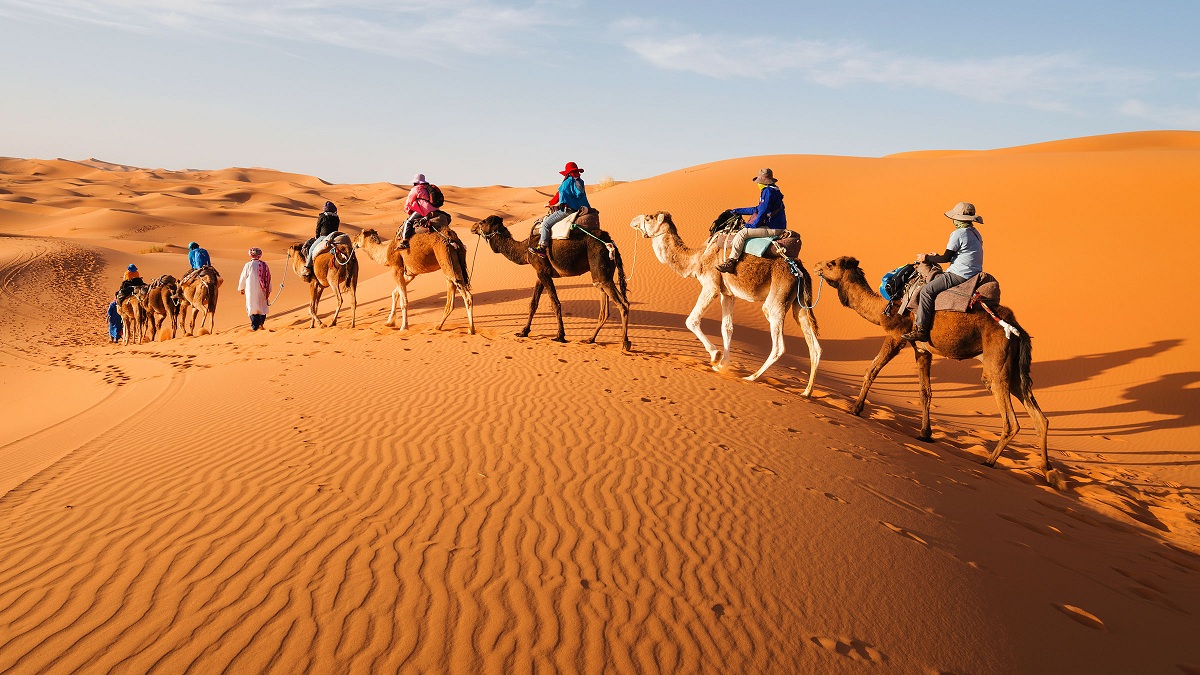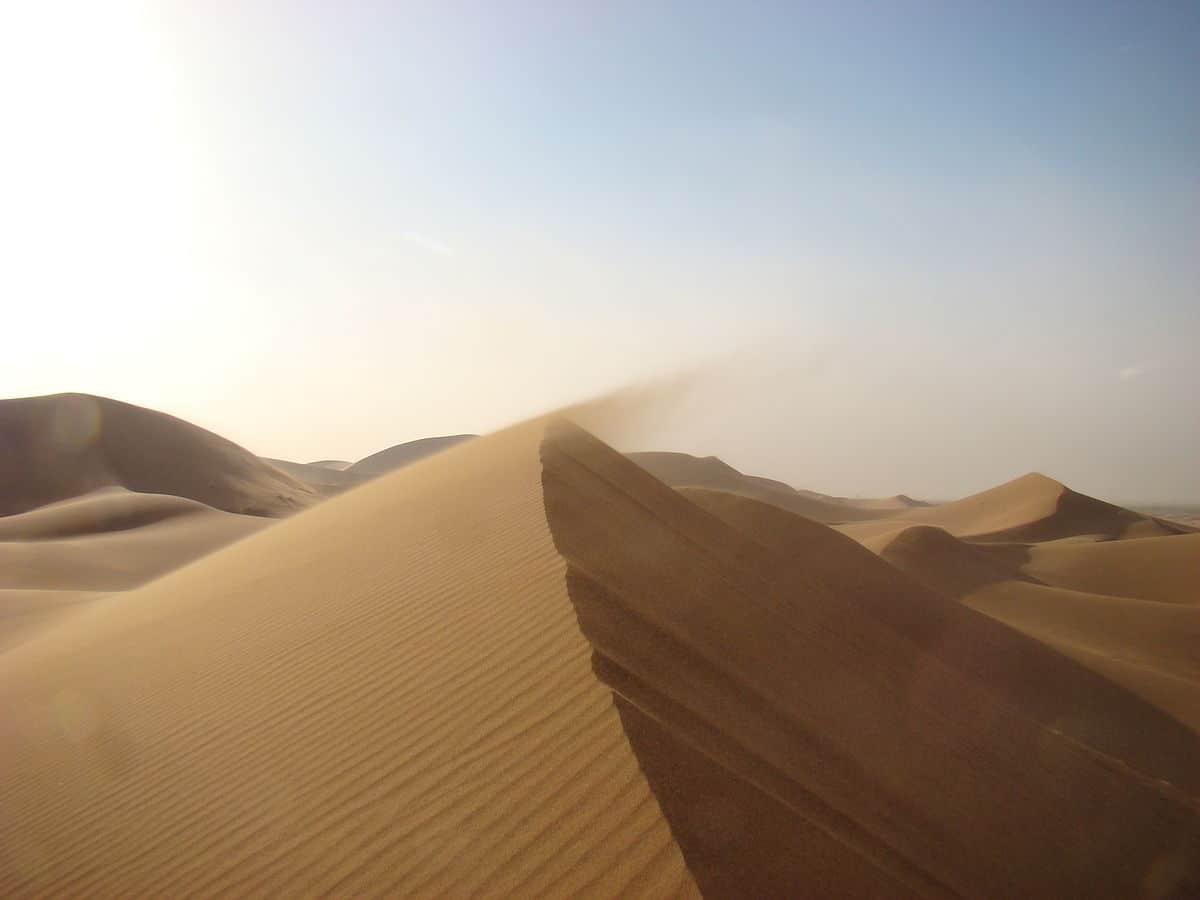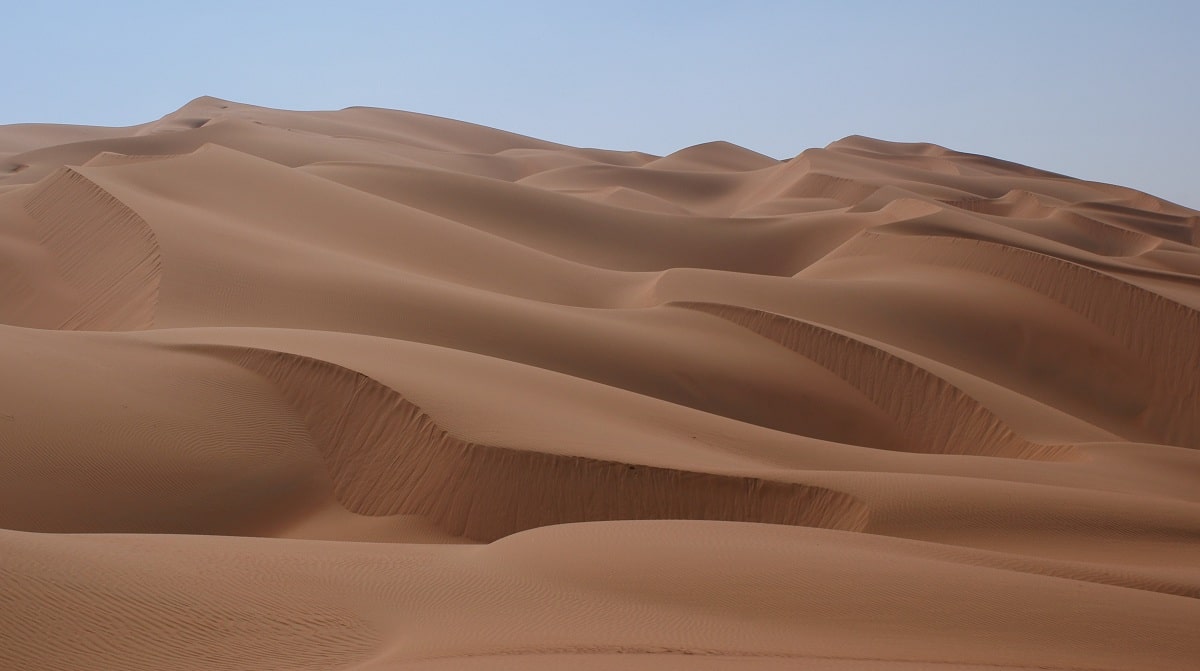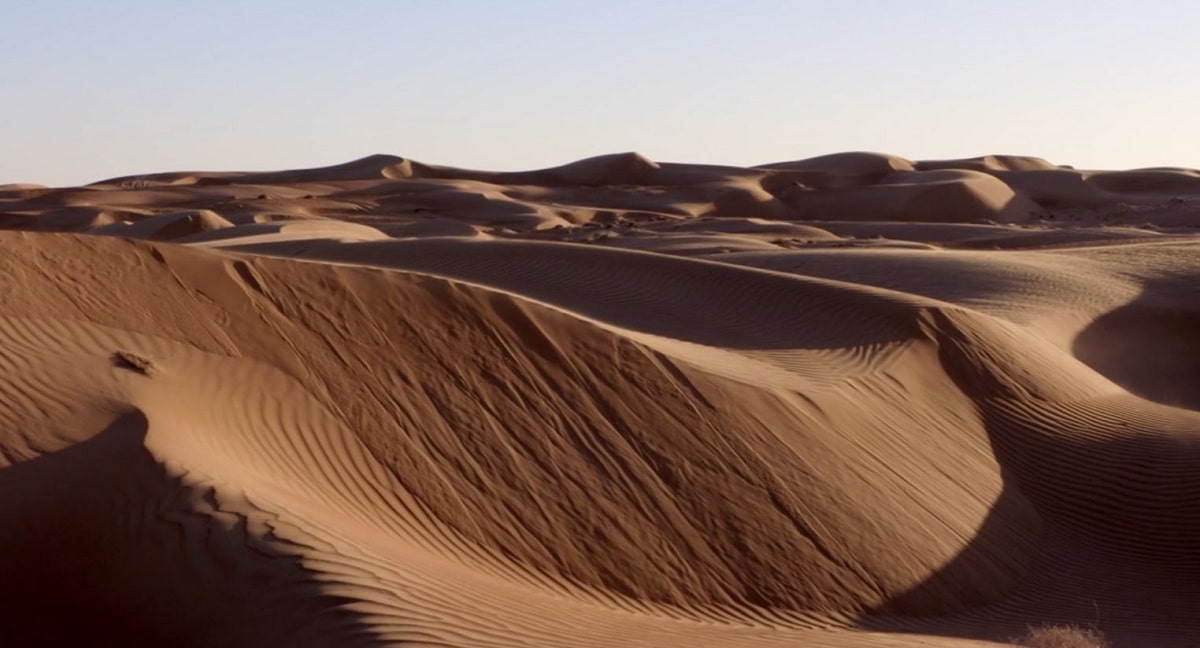
Probably the Sahara desert it will be the most famous in the whole world. It is a desert area that receives less than 25 cm of rain each year and has little or no vegetation. Deserts are considered quite useful natural laboratories to study the interactions of wind and water on the arid surfaces of the planet. They contain valuable mineral deposits that have formed in the arid environment and that have been exposed by continuous erosion from wind and rain.
In this article we are going to tell you all the characteristics, origin, climate, temperatures, flora and fauna of the Sahara desert.
Key features
It is one of the most important deserts in the world and is located in the western part of the African continent. It is made up of a large amount of arid lands ranging from the Atlantic Ocean to the Red Sea. It borders the Atlantic Ocean to the west and the Atlas Mountains and the Mediterranean Sea to the north. The origin of this desert dates back millions of years. This whole region was covered by savannahs and grasslands quite lush and covered with forests. It was the place of numerous hunters and gatherers who lived on animals and plants. It is at that time that this area was known as the Green Sahara.
The origin of the desert is due to the fact that no rainfall has been recorded that manages to maintain a balance between the evaporation caused by the sun's rays and the transpiration of the plants together with the precipitation. For this reason, after a cyclical phenomenon in which the dry season has accumulated and the lack of humidity has been causing more insolation.
About 7 million years ago this desert was formed. The Sea of Thetis was in this area and its remains were drying up. Through this desert began to establish is trade using oxen and carts. As we have mentioned before, at the beginning of time it was a green forest with sheets and it was home to a large amount of fauna. The process of formation of the largest desert on the planet was quite slow and progressive. It took approximately 6.000 years and ended 2.700 years ago.
It must be taken into account that with the desertification process that is threatening most of the soils of the planet, these deserts can form in the long term. Spain has a large part of the territory threatened by desertification and desertification. Part of the soils can become desert or semi-desert areas.
Climate and temperature of the Sahara desert

Some of the most special characteristics of this desert is that it is considered the largest desert in the world. It is also considered one of the driest and with the most extreme temperatures. Very few animals and plants inhabit these places since there is no life or nutrients necessary to sustain themselves. In these deserts inhabit the tribes of the Tuarecs and Berbers. We know that the soils in these areas are very low in organic matter, so agriculture is not an option. The main composition of the soil is gravel, sand and dunes. In this type of soil it cannot support sustainable life that can adapt to these environments. Since the extreme temperature swings of day and night are greatly exaggerated, hardly any type of crop can survive.
The climate of the Sahara desert it is characterized by having sunny days and cool nights. Rainfall is very strange and when it will happen brutally. The influence of the ocean in this part of Africa produces a higher relative humidity in the atmosphere, which is why fogs are frequent on the desert coasts.
In terms of temperature, the climate becomes hotter and extremely dry in summer, so the temperatures are impressive and the difference between day and night is very high. The maximum temperature that can be reached by should is usually between 46 degrees. On the other hand, at night it can reach temperatures of up to 18 degrees. As you can see, it is too extreme a temperature range. The maritime influence is very noticeable, so the average maximum temperatures are 26 degrees on the coasts and those in the interior are around 37 degrees.
Flora and fauna of the Sahara desert

We know that during the day in this desert the heat and the sun's rays are extreme and hit the earth intensely. Temperatures are influenced by both sunlight and humidity in the environment. There are no sources of water or frequent rain so the heat and humidity are extreme. However, during the night the temperature drops considerably, even some days you can experience cold. The skies are clear so the heat that has been during the day hardly stops. You also have to keep in mind that, having clear skies, you can see a whole star show.
The flora and fauna of the Sahara desert is very scarce given the extreme conditions. You can find some animals such as camels and goats that are resistant to these environmental conditions. One of the animals that are very well adapted to these environments is the yellow scorpion.. He is a rather poisonous anthropologist who prays for days that he will not find you on the way. Some species of fox, white antelope, dorcas gazelle, and other species are able to survive in this environment. They have had numerous adaptation processes over thousands of years. It is common to find some snakes in the flour, the African wild dog, some crocodiles and the African silver-billed songbirds.
As for the flora, the vegetation is very scarce due to the little existence of water. There is practically no type of vegetation. The few plants that exist have managed to adapt to the environment and therefore seek to reduce the evaporation rate and increase water absorption. This is the reason why the few plants that exist have very small leaves and tissues and very long roots. Thus, they accumulate water and the tissues and leaves covered in wax. For example, we find plants such as the roses of Jericho, the Cystanche, the zilla, and the apple tree of Sodom.
I hope that with this information you can learn more about the Sahara desert and its characteristics.
